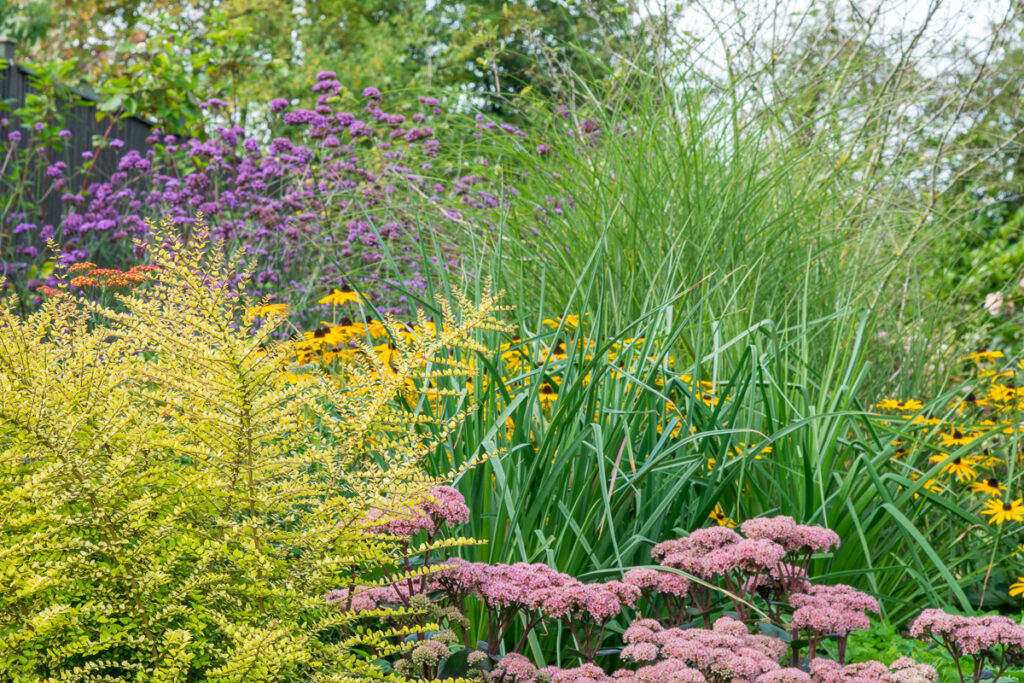
We love creating texture in the garden because it appeals to many senses at once. You can often tell what something is going to feel like just by looking at it - think of Stachys byzantina also known as ‘lambs ears’ where the leaves have that soft woolly texture and Stipa tenuissima (feather grass) with its fine feathery tendrils that make you want to run your fingers through the leaves. But not all plants feel how they look and it is only by interacting with them – i.e. touching them – that anticipation can be confirmed or surprised. When there is great textural contrast within a border its effects are heightened not only because of the visual and physical impact of how those textures work together but also because the invitation to touch it is so much stronger too.
Examples of plants with coarse texture are Gunnera manicata, Bergenia and even Fatsia japonica – where often the leaves themselves become strong and dominant focal points. If you have a small garden having too many coarse textured plants can make it feel claustrophobic, and generally to create greater depth coarse textured plants would be placed in the foreground with finer textures around the boundary. In a small garden this could be achieved using Fatsia japonica in the foreground and Osmanthus x burkwoodii or Sarcococca confusa (or varieties) for instance around the boundary.
Often medium textured plants are used to link the coarse and finer textured plants to create harmony whilst softening the contrasting textures. The shrub Elaeagnus x ebbingei and perennials such as Geraniums or Heucheras both have medium texture foliage that help link the others together.
Finer texture plants have the smallest leaves such as Hebe, Yew or Stipa tenuissima. These plants do not seem to demand the attention that the coarse plants require and therefore are more calming and much easier to look at. They also have a great quality of receding; therefore planting a small garden with many fine textured plants can make it look larger. Fine textured plants can often play an important part in more formal planting schemes because it is often the overall shape of the plant rather than the leaves that becomes the dominate feature. So, for example, Buxus sempervirens (Box) has very small leaves but can be clipped into many shapes as does Taxus baccata which provides a good backdrop for different types of planting schemes.
Remember that if your garden is lacking in texture the ratio 1/3 fine-textured plants and 2/3 course textured plants is a good guide to work towards. Obviously every garden and setting is different but as a general rule it’s not a bad one to remember!




